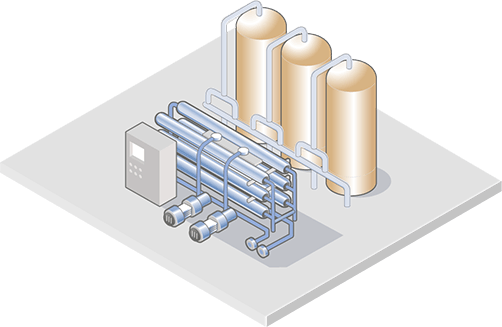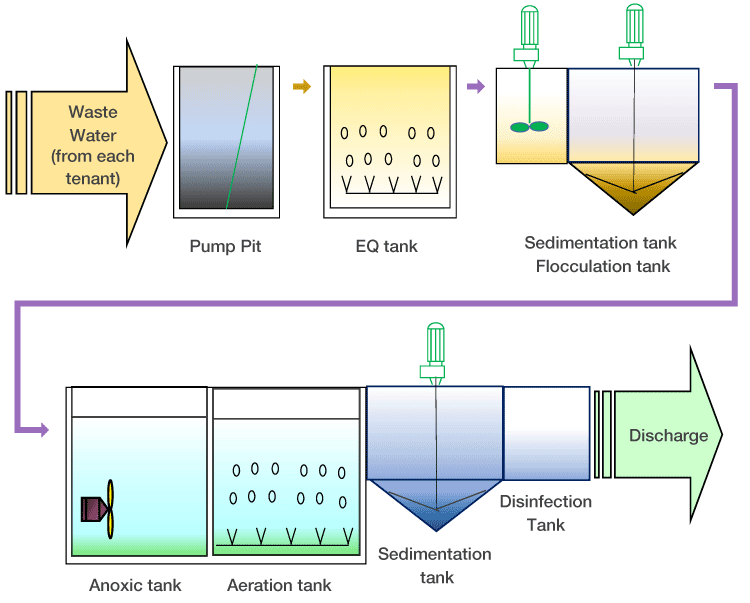Technologies and Developments in Industrial Waste Water Treatment Technologies
The landscape of commercial wastewater therapy is undertaking a transformative shift, driven by advancements that enhance both effectiveness and sustainability. Arising technologies, such as membrane layer bioreactors and microbial fuel cells, are redefining contaminant removal processes while adding to energy generation. In addition, resource recovery methods are gaining traction, straightening with round economic situation concepts. As regulatory standards advance, the combination of AI and maker understanding right into wastewater management systems promises to make sure and improve procedures conformity. The full effects of these innovations elevate essential inquiries about their scalability and lasting effect on industry techniques.
Summary of Drainage Therapy Technologies
Wastewater treatment technologies encompass a series of approaches made to get rid of impurities from commercial effluents prior to their release right into the atmosphere. These modern technologies are essential for preserving ecological balance and making certain compliance with environmental laws. The key categories of wastewater therapy include physical, chemical, and organic methods, each serving distinct objectives based upon the nature of the contaminants present.

Biological treatment approaches utilize microorganisms to deteriorate natural matter, making them specifically reliable for organic-rich effluents. Methods like turned on sludge and biofilm reactors harness the natural deterioration capacities of bacteria, causing significant reductions in biochemical oxygen demand (BODY)
Advanced Purification Techniques
Advanced purification strategies represent an essential development in the world of industrial wastewater treatment, enhancing the performance of impurity removal procedures. Industrial Waste Water Treatment. These techniques incorporate a variety of modern technologies, consisting of microfiltration, ultrafiltration, nanofiltration, and turn around osmosis, which supply consecutive obstacles for different fragment dimensions and chemical frameworks
Microfiltration and ultrafiltration make use of membrane systems to remove suspended solids, bacteria, and larger organic molecules, enhancing the top quality of effluent before additional therapy. Nanofiltration connects the gap between ultrafiltration and turn around osmosis, successfully removing organic compounds and divalent ions, thus lowering the lots on downstream processes.
Reverse osmosis supplies the greatest degree of filtration by enabling just water and tiny molecules to travel through its semi-permeable membrane layers, making it excellent for reclaiming top notch water from industrial effluents. Current advancements in membrane layer technology, consisting of the development of more durable and fouling-resistant materials, have actually dramatically improved operational effectiveness and minimized prices.
Including these innovative purification methods not just improves the overall treatment process however additionally contributes to sustainability efforts by enabling water reuse and source recuperation in industrial setups. (Industrial Waste Water Treatment)
Organic Therapy Innovations

In addition, the development of engineered biological systems, such as membrane layer bioreactors (MBRs), integrates organic therapy with advanced membrane layer filtering. This integration allows for higher effluent top quality and minimized impact, making it appropriate for space-constrained industrial facilities. Developments in genetically crafted bacteria have actually also arised, enhancing the biodegradation of specific impurities, such as drugs and heavy steels, that are generally challenging to remove.
Additionally, official website the implementation of bioaugmentation strategies, where useful germs are presented to boost the existing organic treatment processes, has revealed encouraging lead to boosting therapy efficiency. These advancements collectively indicate a pattern towards even more effective and lasting organic therapy methods that can adjust to the developing intricacies of commercial wastewater streams. As industries remain to focus on ecological compliance, these organic developments will play a critical function in wastewater management.

Resource Recovery Methods
In commercial settings, the assimilation of resource healing techniques has actually ended up being increasingly important for improving sustainability and decreasing waste. These methods concentrate on removing valuable products and energy from wastewater streams, consequently changing potential pollutants into multiple-use sources.
One prominent strategy is vitamins and mineral healing, where nitrogen and phosphorus, frequently present in excess in wastewater, are caught and exchanged plant foods. This not just decreases ecological effects however additionally provides a round economic situation remedy for farming applications. Furthermore, innovations such as anaerobic digestion permit the conversion of natural waste right into biogas, a sustainable energy resource that can balance out nonrenewable fuel source use in commercial procedures.
Additionally, progressed purification and membrane layer innovations help with the recovery of commercial by-products such as salts and steels. These recovered products can be rehabilitated into production processes, decreasing the demand for virgin resources.
Future Patterns in Waste Water Administration
As sectors progressively focus on sustainability, the future of wastewater management is readied to go through considerable transformations. Technological innovations, such as expert system and maker discovering, will certainly enable a lot more effective tracking and administration of wastewater systems. These modern technologies can predict upkeep demands, maximize treatment processes, and improve decision-making, eventually decreasing functional prices and environmental effect.
Additionally, the integration of round economic situation principles will certainly play a critical duty in wastewater management. Industries are anticipated to move in the direction of systems that not only deal with wastewater however additionally recuperate beneficial resources, such as nutrients, water, and power. This shift will decrease waste and advertise the reuse of materials, straightening with global sustainability objectives.
Arising treatment strategies, such as membrane bioreactors and advanced oxidation procedures, will certainly even more enhance the effectiveness of wastewater therapy, allowing for better effluents suitable for reuse. In addition, regulatory frameworks are most likely to evolve, stressing stricter standards for wastewater discharge and encouraging industries to adopt ingenious therapy options.
Final Thought
Finally, the evolution of commercial wastewater treatment modern technologies demonstrates a substantial shift in the direction of boosted performance and sustainability. Technologies in advanced purification strategies, biological treatments, and resource healing techniques highlight the market's commitment to environmental stewardship. The combination of fabricated intelligence and machine knowing even more enhances click now these processes, making sure regulative compliance and advertising a circular economic situation. Continued developments in these areas will certainly play a critical duty in forming the future of wastewater administration and protecting vital water sources.
The landscape of industrial wastewater therapy is going through a transformative change, driven by developments that boost both efficiency and sustainability.Wastewater treatment innovations include an array of methods made to eliminate impurities from industrial effluents before their launch into the environment.Utilizing the power of organic procedures has led to considerable technologies in the therapy of industrial wastewater.Furthermore, the application of bioaugmentation approaches, where advantageous microorganisms are presented to improve the existing biological therapy procedures, has actually revealed promising outcomes in enhancing treatment efficiency. These innovations jointly represent a fad in the direction of even more sustainable and reliable organic treatment methods that can adjust to the progressing complexities of industrial wastewater streams.